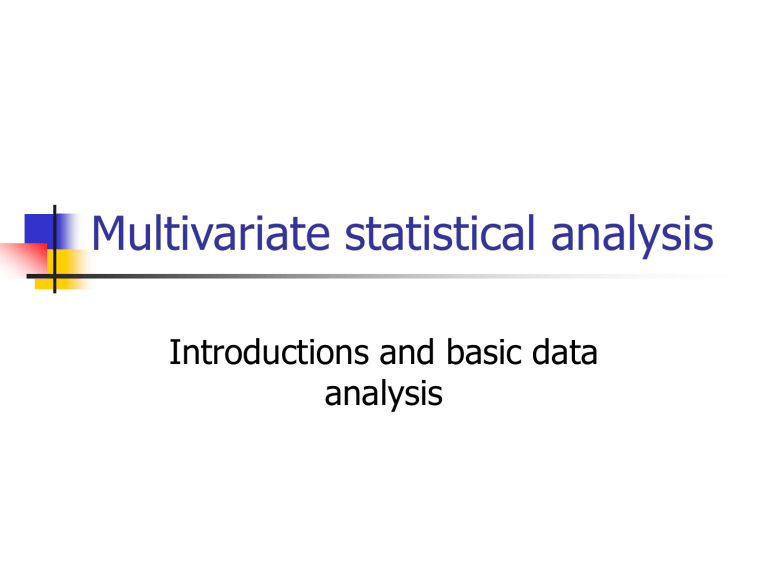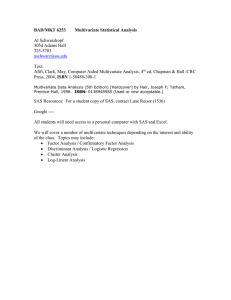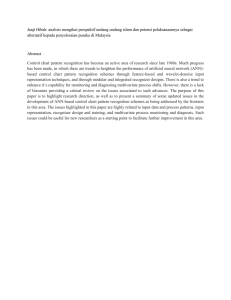
Multivariate statistical analysis Introductions and basic data analysis Multivariate Variate (變量) vs. variable (變數) The attributes that the researcher concerned and observed performance The attributes that the researcher could operate for the expected performance Uni-variate (單變量) vs. multi-variate (多變量) Single concerned performance Multiple concerned performance vector Measurement scale Nominal Ordinal Interval Ratio ref. p.10 表1.2-1 四種衡量尺度之比較 Four types of measuring scale Measuring Variables Measuring variables: used to describe the attitudes of specific concerned attributes Analytical variables: internal scale, ratio scale Categorical variables: nominal scale, ordinal scale ref. p.11, 表1.2-2,-3,-4 Example Cost of measurement Error cost: the impact resulted from the deviation to the true attitude Measuring cost: the difficulty of accurate measuring Reliability Retest reliability Split half reliability Verify the stability of the responses Designing the contrast questions Cronbach’s α (>0.7) Cronbach’s α Validity Effectiveness to reflect the concerned issues Content validity Criteria-related validity Construct validity Problems of validity Likert scale Quasi-interval scale 5-scale, 7-scale, (in the form of 2/3 negative scale and 2/3 positive scale around the original) Data format Cases: the observant, the experimental subjects/objects Variables: the set of concerned attributes Observations: the collected data Observation vector: the set of all attributes retained from a specific case Data format Classification of multivariate models Functional relation model Interdependence relation model Variables interdependence Cases interdependence Systemic relation model Responsive variates=f (independent variables) Path analysis LISREL model ref. p.33, 表1.7-1 多變量統計模式之歸類; p.40,表1.7-2; p.41,表1.7-3 Multivariate analysis models Multivariate analysis models Multivariate analysis models SAS/SPSS introductions




